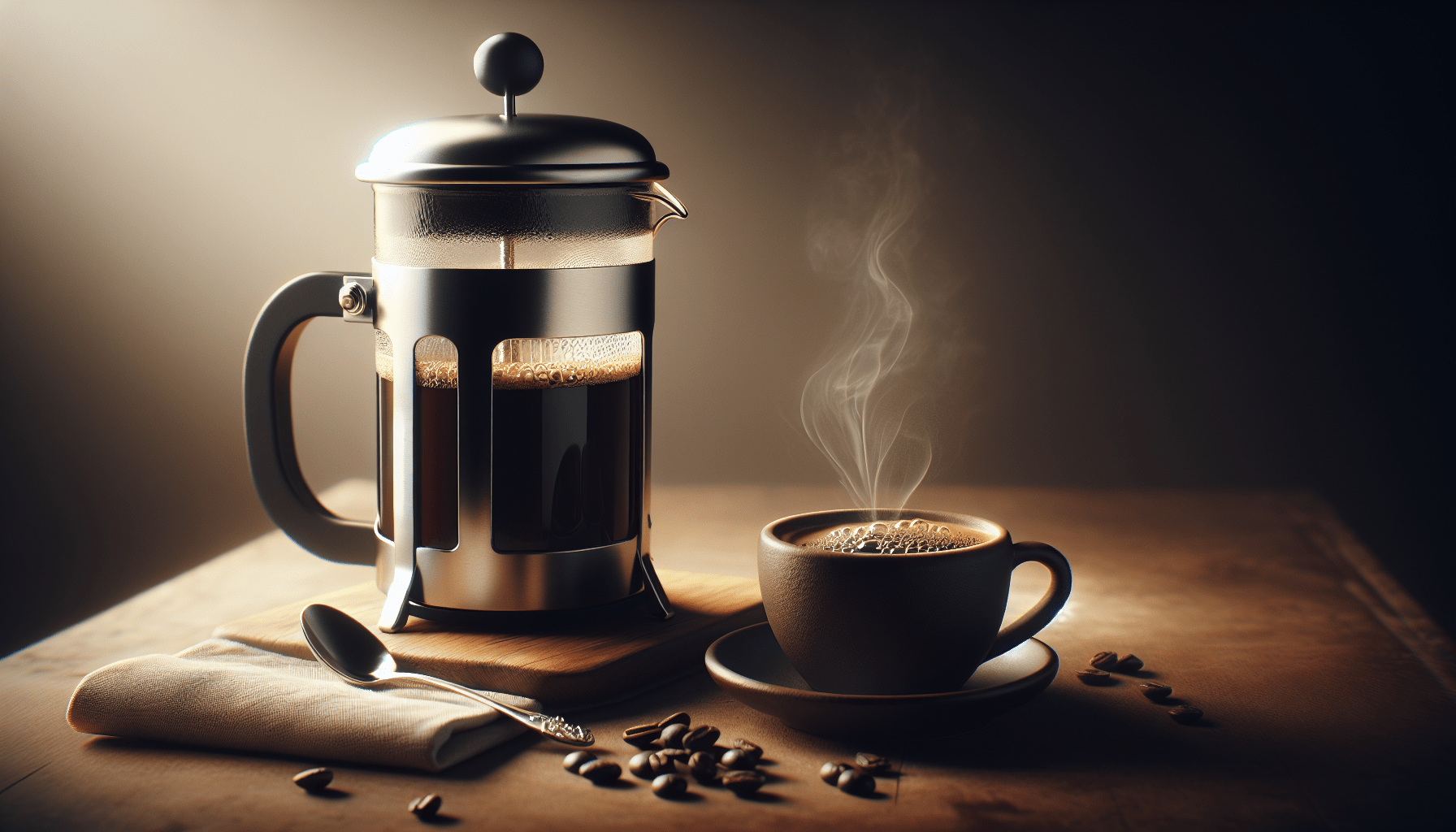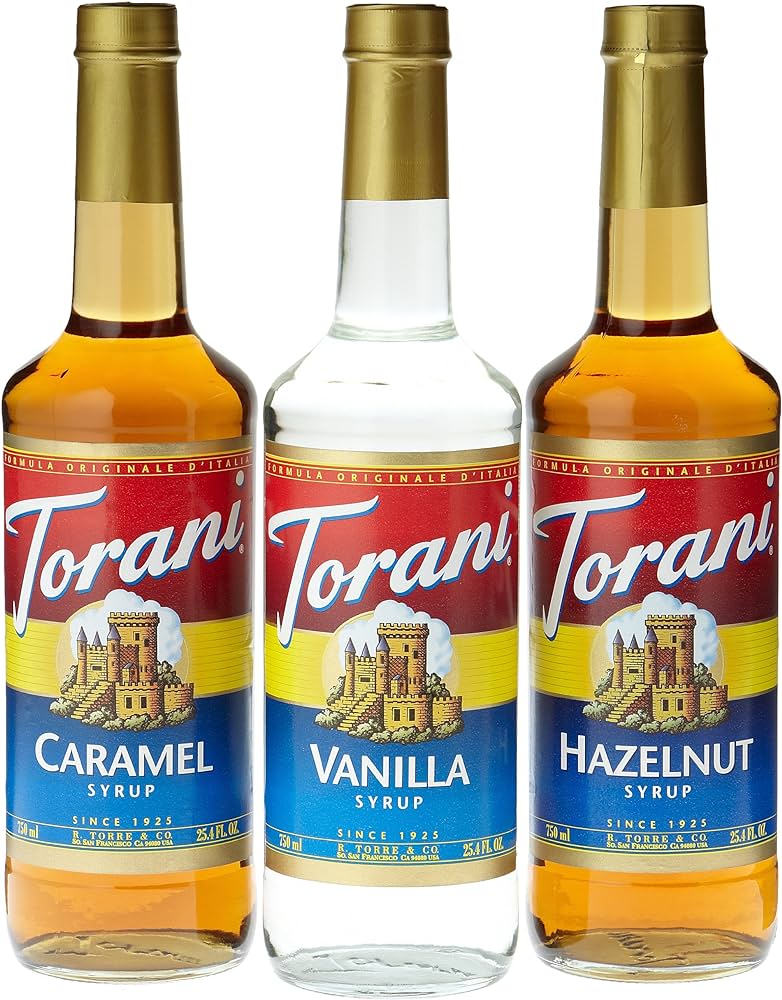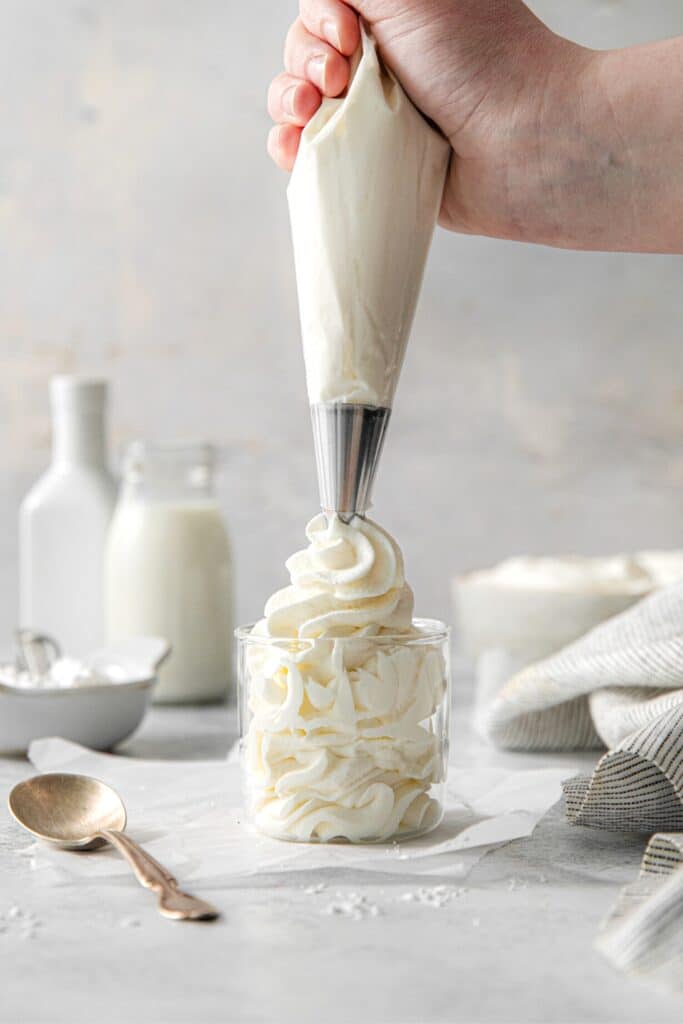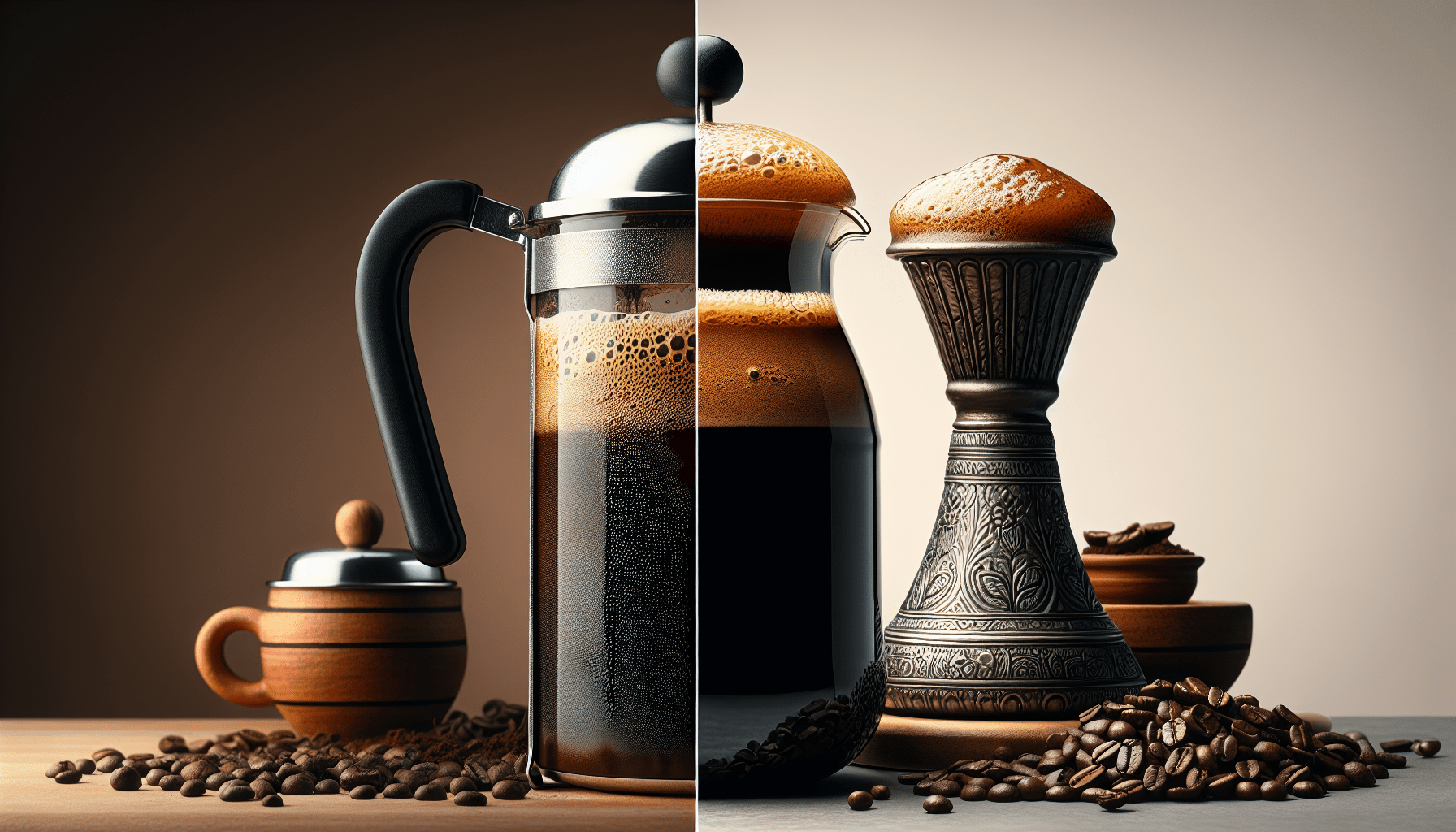You love your morning cup of espresso, but you’re curious if you can achieve that rich and bold taste without investing in an expensive espresso machine. Well, you’re in luck because today we’re going to explore the question: can you make espresso with a French press? Get ready to unlock the secrets of using this classic coffee brewing device to create your very own espresso-like concoction, right from the comfort of your own kitchen. So grab your French press, your favorite coffee beans, and let’s get brewing!
What is a French Press?
A French press, also known as a press pot or plunger pot, is a manual coffee brewing device that is widely used for making a rich and flavorful cup of coffee. It consists of a glass or stainless steel cylindrical container, a plunger with a mesh filter, and a lid.
Definition
A French press is a coffee brewing method that involves immersing coffee grounds in hot water and then pressing down a plunger to separate the brewed coffee from the grounds. This process allows the coffee to extract all of its flavors, oils, and aromatic compounds, resulting in a full-bodied and robust cup of coffee.
Features
One of the key features of a French press is its simplicity. Unlike other coffee brewing methods that require electricity or complicated machinery, a French press only requires hot water and coarsely ground coffee beans. This makes it a popular choice for coffee lovers who appreciate the joy of a hands-on brewing process.
Another notable feature of a French press is its ability to retain the natural oils and fine particles of the coffee, which are usually trapped by paper filters in other brewing methods. This gives the coffee a rich and fuller-bodied texture, allowing the flavors to shine through more prominently.
What is Espresso?
Espresso is a concentrated and strong coffee beverage that is brewed by forcing hot water under high pressure through finely ground coffee beans. It is characterized by its intense flavor, thick consistency, and layer of foam on top known as crema.
Definition
Espresso is a brewing method that involves using an espresso machine to extract coffee using high pressure and finely ground coffee beans. The resulting beverage is highly concentrated and is typically served in small amounts, known as shots.
Characteristics
Espresso is known for its bold and robust flavor profile. It is often described as having a strong, intense, and slightly bitter taste, with notes of dark chocolate, caramel, and roasted nuts. The high pressure used during the extraction process allows for the quick release of aromatic compounds, resulting in a rich and aromatic cup of coffee.
Additionally, espresso has a distinct texture and body. It is thicker than regular brewed coffee and has a velvety mouthfeel. The layer of crema adds a smooth and creamy element to the espresso, enhancing both the taste and visual appeal of the beverage.
Can You Make Espresso with a French Press?
While a French press is not specifically designed for making espresso, it is possible to create a concentrated coffee beverage that resembles the characteristics of espresso using this brewing method. However, it’s important to note that the end result will not be an authentic espresso shot as it lacks the high pressure extraction.
Comparison to Traditional Espresso Machine
A traditional espresso machine uses high pressure to force hot water through finely ground coffee, creating a concentrated and full-bodied beverage. This high pressure is crucial for extracting the flavors and aromatic compounds efficiently, resulting in the characteristic taste of espresso.
On the other hand, a French press relies on immersion brewing, where the coffee grounds are steeped in water. Although the French press cannot replicate the high pressure extraction of an espresso machine, it can produce a strong and concentrated coffee similar to espresso.
Technique
To make an espresso-like beverage with a French press, a slightly different technique is needed compared to the standard brewing process. This involves adjusting the grind size, brew time, and coffee-to-water ratio to create a more concentrated and intense flavor.
Equipment Needed
To make espresso with a French press, you will need the following equipment:
- French Press: Choose a sturdy and heat-resistant French press with a capacity that suits your brewing needs.
- Coffee Grinder: Invest in a burr grinder to ensure a consistent and uniform grind size.
- Freshly Roasted Coffee Beans: Use high-quality coffee beans that are specifically suited for espresso-style brewing.
- Coffee Scale: For precise measurements of coffee and water.
- Hot Water Source: Boil water and allow it to cool to the desired temperature for brewing, around 195 to 205°F (90 to 96°C).
Steps to Make Espresso with a French Press
Follow these step-by-step instructions to make espresso with a French press:
Grind the Coffee Beans
Start by grinding the coffee beans to a fine and uniform consistency. The grind size should be slightly finer than what you would typically use for regular French press brewing, but not as fine as espresso grind. Aim for a medium-fine grind that resembles coarse sand.
Preheat the French Press
Preheat the French press by rinsing it with hot water. This helps to maintain the brewing temperature and ensure even extraction.
Measure and Add Coffee
Using a coffee scale, measure the desired amount of coffee grounds. The recommended coffee-to-water ratio for a French press espresso is around 1:8, meaning 1 part coffee to 8 parts water. Adjust the amount according to your preference.
Add Hot Water
Heat water to the appropriate temperature, around 195 to 205°F (90 to 96°C), and pour it over the coffee grounds in the French press. Ensure that all the grounds are evenly saturated.
Stir and Allow to Steep
Give the coffee and water mixture a gentle stir to ensure even extraction. Place the lid on the French press, but do not press the plunger down. Allow the coffee to steep for approximately 3 to 4 minutes, or adjust the time according to your desired strength.
Press the Plunger
After the steeping time, slowly press the plunger down to separate the brewed coffee from the grounds. Apply gentle and even pressure, avoiding any sudden movements. Take your time to press the plunger down to ensure a clean separation.
Serve the Espresso
Once the plunger is fully pressed down, your espresso-like beverage is ready to be served. Pour the coffee into cups or demitasse glasses and enjoy the bold and concentrated flavors. Add sugar or milk, if desired, to customize your drink.
Factors Affecting the Quality of Espresso Made in a French Press
Several factors can influence the quality and taste of the espresso-like brew made using a French press:
Grind Size
The grind size plays a crucial role in the extraction process. A too coarse grind will result in weak and under-extracted coffee, while a too fine grind can lead to over-extraction and a bitter taste. Aim for a medium-fine grind that allows for proper extraction of flavors.
Water Temperature
The water temperature affects the extraction and solubility of the coffee compounds. Use water that is heated to the recommended range of 195 to 205°F (90 to 96°C) to achieve optimal extraction.
Brew Time
The duration of the steeping time will impact the strength and intensity of the coffee. Adjust the brew time according to your personal preference, but keep in mind that longer steeping times can result in a stronger and potentially bitter taste.
Coffee-to-Water Ratio
The ratio of coffee to water will determine the strength and concentration of the espresso-like brew. Experiment with different ratios to find the balance that suits your taste preferences, but a general guideline is a 1:8 coffee-to-water ratio.
Advantages of Making Espresso with a French Press
Cost-effective
One of the major advantages of making espresso with a French press is its cost-effectiveness. French presses are relatively affordable compared to espresso machines, making it a budget-friendly option for those who want to enjoy espresso-like beverages without investing in expensive equipment.
Portability
French presses are compact and portable, making them a convenient brewing method for coffee enthusiasts on the go. Whether you’re traveling, camping, or simply need a coffee fix away from home, a French press allows you to enjoy a homemade espresso-like coffee wherever you are.
Control over the Brewing Process
With a French press, you have complete control over the brewing process. You can adjust factors such as grind size, brew time, and coffee-to-water ratio to personalize your espresso-like beverage according to your taste preferences. This level of control allows you to explore and experiment with different brewing techniques.
Disadvantages of Making Espresso with a French Press
Lack of Pressure
One of the main disadvantages of making espresso with a French press is the lack of pressure. The high pressure extraction process in an espresso machine is what creates the distinct flavors and characteristics of true espresso. Without this pressure, the resulting brew may not perfectly replicate the flavors and crema of traditional espresso.
Thicker Body
Due to the immersion brewing method used in a French press, the resulting espresso-like beverage tends to have a thicker and more textured body compared to espresso made with a machine. Some coffee lovers prefer the full-bodied texture, while others may find it too heavy.
Less Crema
Crema, the golden foam layer that forms on top of an espresso shot, is a defining characteristic of traditional espresso. While a French press can create a dense and frothy foam, it may not produce the same volume and stability of crema that is achieved with high-pressure extraction.
Inconsistent Results
Achieving consistent results when making espresso with a French press can be challenging. The brewing variables, such as water temperature, grind size, and brew time, need to be carefully controlled to replicate the desired taste each time. Small variations in the brewing process can result in inconsistent flavors and strengths.
Tips for Making the Best Espresso with a French Press
To improve your chances of making a great espresso-like brew with a French press, consider the following tips:
Use Freshly Roasted Coffee Beans
Freshly roasted coffee beans are essential for capturing the full range of flavors. Invest in quality beans that are specifically roasted for espresso-style brewing and try to use them within two to three weeks of the roast date.
Grind the Beans Right Before Brewing
To maximize the extraction and freshness, grind the coffee beans right before brewing. This ensures that the flavors are fully released and minimizes the risk of the coffee going stale.
Experiment with Brew Time and Ratio
Adjust the brew time and coffee-to-water ratio to find your preferred taste profile. Longer brew times and higher coffee ratios will result in a stronger and more intense flavor, while shorter brew times and lower ratios will yield a milder cup.
Control Water Temperature
Invest in a thermometer or a kettle with built-in temperature control to accurately measure the water temperature. Maintaining the recommended range of 195 to 205°F (90 to 96°C) ensures proper extraction and optimal flavors.
Practice Technique
Brewing with a French press requires practice and experimentation. Take note of the variables you adjust, such as grind size and brew time, and keep a record of your preferred settings and outcomes. With time and practice, you’ll be able to fine-tune your technique to consistently make delicious espresso-like coffee.
Can French Press Espresso Compete with Traditional Espresso?
While French press espresso can offer a rich and concentrated coffee experience, it is important to note that it cannot perfectly replicate the flavors and characteristics of traditional espresso made using an espresso machine. The lack of high pressure extraction and the variations in the brewing process mean that French press espresso may have a slightly different taste profile.
Taste Comparison
French press espresso tends to have a fuller-bodied and more textured mouthfeel compared to traditional espresso. The absence of crema and the lower pressure extraction can result in a slightly different flavor profile. However, many coffee lovers enjoy the unique taste and intensity that French press espresso offers.
Preference
Ultimately, the preference between French press espresso and traditional espresso comes down to personal taste. Some individuals may prefer the bold and robust flavors of French press espresso, while others may prefer the smoother and more nuanced flavors of espresso made with a traditional machine.
Alternative Methods to Make Espresso at Home
If you’re looking for alternative methods to make espresso-like coffee at home, consider these options:
Moka Pot
A moka pot, also known as a stovetop espresso maker, is a popular choice for making strong and concentrated coffee at home. It uses pressure generated by steam to extract the flavors from finely ground coffee. While it may not produce true espresso, it offers a similar intensity and richness.
AeroPress
The AeroPress is a versatile coffee brewing device that can produce a concentrated coffee beverage similar to espresso. It uses air pressure to force hot water through a coffee-filled chamber, resulting in a smooth and flavorful cup. The AeroPress offers more control over the brewing variables and can be a great alternative for espresso enthusiasts.
Stovetop Espresso Maker
A stovetop espresso maker, also known as a stovetop percolator, is another option for making espresso-like coffee at home. It works by passing pressurized steam through coffee grounds, producing a rich and robust cup of coffee. While it may not replicate the flavors and crema of traditional espresso perfectly, it can be a convenient and affordable choice.
In conclusion, while a French press cannot replicate the exact flavors and characteristics of traditional espresso, it is possible to create a concentrated and intense coffee beverage resembling espresso using this brewing method. With the right technique, equipment, and attention to variables, a French press can produce a rich and flavorful cup of espresso-like coffee. Experiment, refine your brewing process, and enjoy the unique coffee experience that a French press has to offer.




